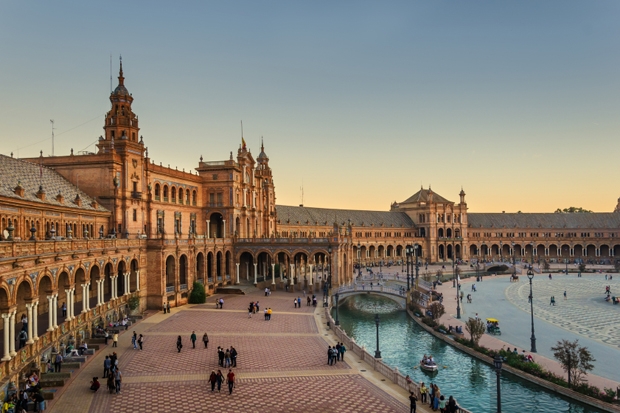Let’s take it from the top: Seville is one of the most beautiful cities in Europe. The capital of Andalusia, it is situated on the banks of the Guadalquivir river, and has a history that predates the Greeks and the Phoenicians. (Almost as old as Milton Keynes, but slightly more exciting at night.) The place reeks of charm and old-world splendour, its palaces, cathedrals, forts and magnificent spaces reflecting a civilisation that worshipped a Christian God and an all-conquering Christian army. Seville Cathedral is the biggest temple in Spain and the third largest of the Christian world, exceeded only by Saint Peter’s Basilica in Rome and St Paul’s in London. And it was built on top of the great mosque while conserving la Giralda, the minaret it replaced once the Moors had been chased out. This was back in 1248, and it illustrates why we’re on a losing streak. When the Muslims negotiated the surrender of Seville to the Christian forces, they asked that the great mosque and its minaret be destroyed in order not to be soiled by people like you and me. But Don Alfonso, the winner, threatened to kill anybody who dared destroy the beautiful edifice. Just like those nice guys of the Islamic State in Palmyra, n’est-ce pas?
Going around the city of 800,000 is a revelation in civilised living. There is virtually no sound of traffic or strewn litter, and most of the tourists flocking to the fortresses and palaces are Spanish. Yes, there are Chinese, but they are outnumbered by the locals. South Saharans are few and I counted only about 15 women wearing the hijab. The city has very wide, imperial boulevards, beautiful parks and gardens, and narrow streets that evoke mystery, romance, bullfighting and flamenco.
This is Papa Hemingway and Ava Gardner country — baroque-style façades and the oldest bullring in the world.









Comments
Join the debate for just £1 a month
Be part of the conversation with other Spectator readers by getting your first three months for £3.
UNLOCK ACCESS Just £1 a monthAlready a subscriber? Log in